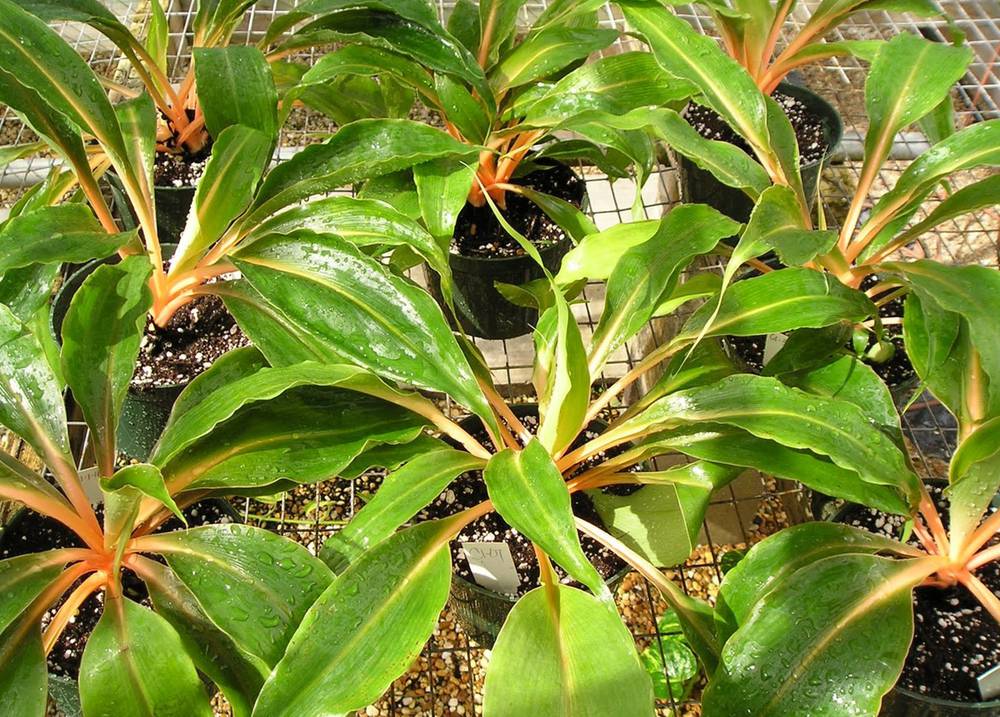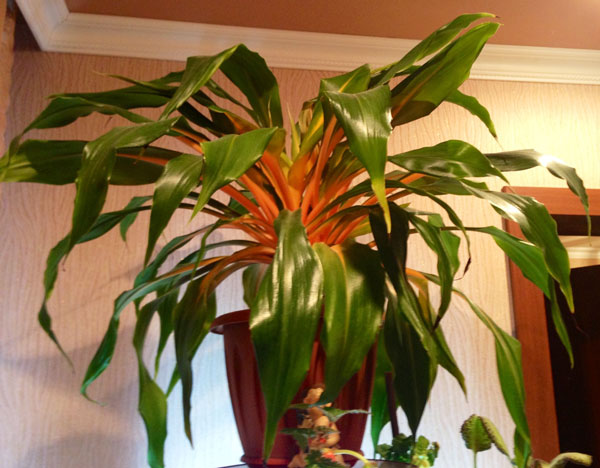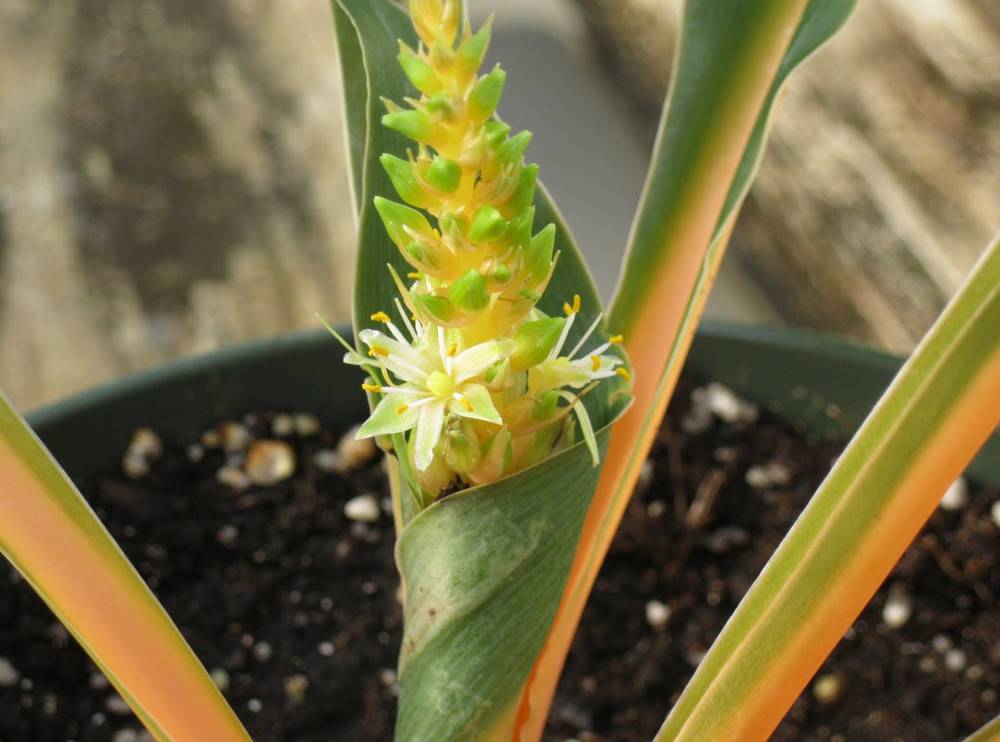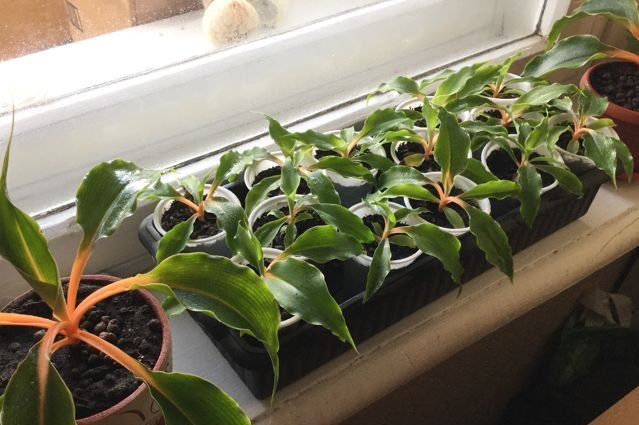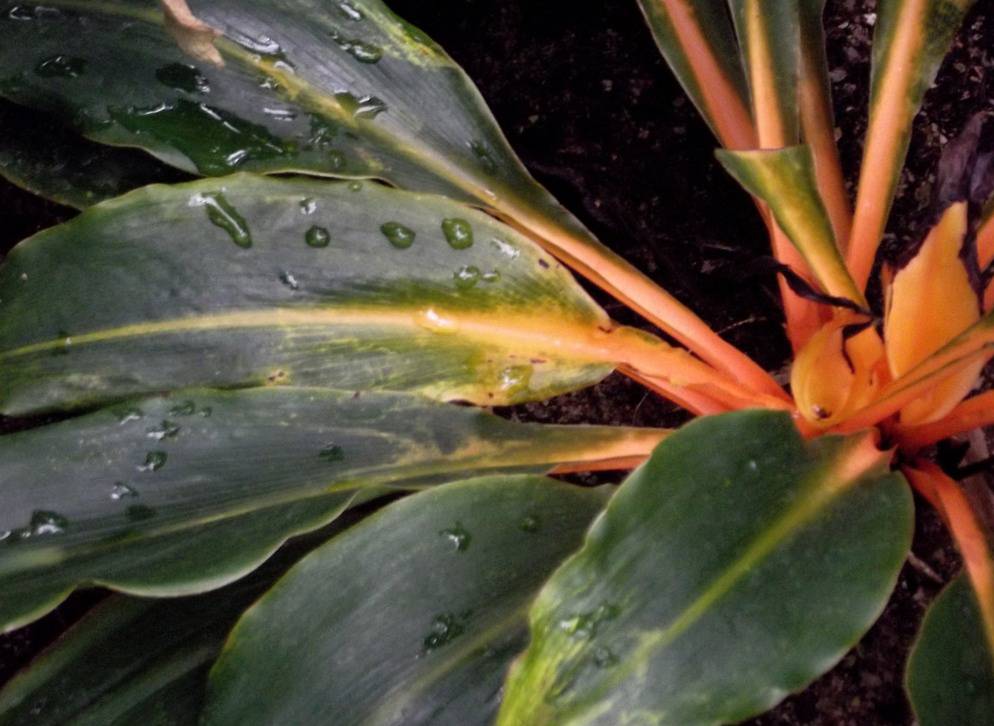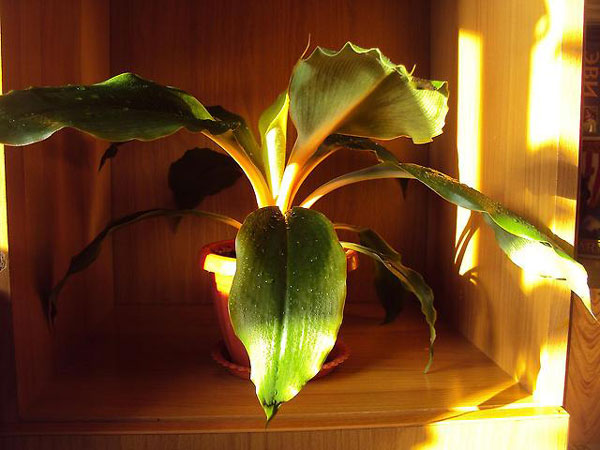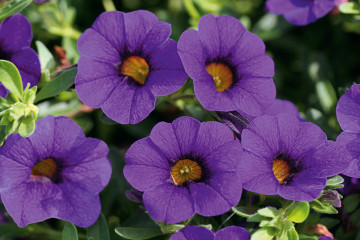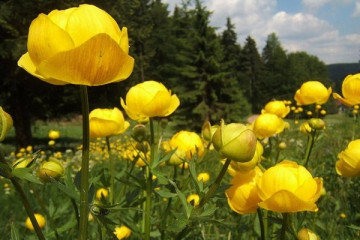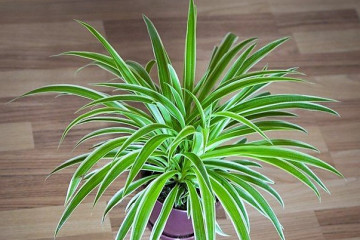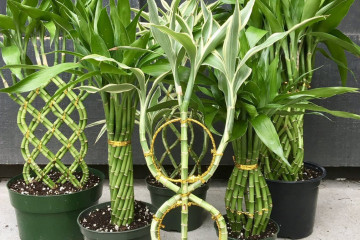Flower chlorophytum orange - description and care
Content:
- What does chlorophytum orange look like, which family does it belong to?
- Common varieties
- Healing properties
- Briefly about the history of appearance
- Home care for chlorophytum orange
- When and how it blooms
- Pruning
- How orange chlorophytum reproduces
- Possible growing problems and diseases
- Signs and superstitions
Chlorophytum is a long-known indoor herb. Several decades ago, it could be found in almost every home or institution. Over time, its prevalence began to fade, although this is unreasonable. Chlorophytum has a number of useful properties, is unpretentious in maintenance and is aesthetically pleasing.
What does chlorophytum orange look like, which family does it belong to?
Herbaceous perennial is distinguished by a variegated emerald hue, wide leaves are pointed, glossy. Closer to the base, they narrow significantly, reach 25-30 cm in length, 5-10 cm in width, the edges are slightly wavy. Growing from the center of the basal rosette on elongated petioles, the leaves hang down in a lush cascade in different directions. The total plant height reaches 45-60 cm in natural conditions and 25-30 cm in containers at home. The root system has a tuberous shape, quite strong. The stem is shortened, the lateral shoots bloom over time. The smell of chlorophytum is pleasant, soothing. The flowers on the plant are arranged spirally.
The bush is classified as a member of the Asparagus family, the homeland of the flower is South Africa. The plant is perennial, lives on average 10 years.
Common varieties
Chlorophytum orange has two similar varieties - Fire Flash and Green Orange. Visually, they are almost the same, the differences are minor:
- In the Fire Flash cultivar, the median vein is less pronounced. At the base, it is orange, but gradually the shade changes and becomes green.
- The shape of the leaves of Fire Flash is the same as that of Green Orange, but their size is slightly larger.
Healing properties
For modern man, winged chlorophytum is priceless; it is considered a "domestic ecologist". Scientists have found that perennial has a unique ability - it removes harmful substances from water. It easily removes formaldehyde and toxins, carbon monoxide and impurities in the surrounding area. The medicinal characteristics of the plant:
- Destroys pathogenic microflora. One adult bush cleans about 2 square meters with the help of phytoncides. m. space from pathogenic microbes. A few perennials are enough to always have practically sterile air in the apartment. The flower kills up to 80% of bacteria around it.
- Eliminates gas pollution. Often the flower is placed on refrigerators and near gas and electrical equipment. It is able to cleanse the air from harmful emissions from these household appliances, aerosols and chemicals.
- Absorbs fine dust particles in the air.
- Promotes increased humidity.Chlorophytum accumulates moisture between the leaves and, if necessary, releases it into the atmosphere.
- Copes with vapors of mercury and lead, acetone and carbon monoxide, harmful emissions of operating plants. Even with frequently opened windows and balcony doors, there will always be clean air inside the apartment.
Briefly about the history of appearance
Chlorophytum was introduced to Europe over 200 years ago. The homeland is the humid tropics and subtropics of South America, Africa and Asia. Literally, the name can be translated as a green plant. There are numerous other folk names for the plant: Flash of Fire and Cheerful Family, Sierra Leone Lily and Champagne Splash, Fire Spider Plant and Viviparous Corolla.
Home care for chlorophytum orange
Chlorophytum orange is very easy to care for. But there are a few rules to follow.
Temperature
Perennial prefers warmth. The most suitable temperature regime is + 25 ... + 27 ° С. In the winter season, the permissible temperature is + 20 ... +22 ° С. Its small drops have a beneficial effect on the growth of orange chlorophytum, sometimes it is advisable to keep it in the cold (about + 15 ° C).
Lighting
Chlorophytum winged loves diffused light, but can grow both under the sun and in the shade. One has only to protect it from direct sunlight so that there is no leaf burn.
With an excessive abundance of light, the plant grows more slowly. Even outdoors, it is better to plant it in the shade of trees. From the sun, brown spots that look like freckles may appear on the leaves. With excessive lighting, foliage can generally lose color to an unhealthy yellow hue (chlorosis). Partial shade contributes to the fading of the color, the color fades.
Watering
Chlorophytum thick-leaved should not be poured, however, it should be watered often and abundantly, at least 2 times a week. It is better to use non-fluoridated water, settled for 24 hours, at room temperature. Fluoride can cause a disease in which brown spots appear on the leaves.
A perennial can survive for 1-2 weeks without watering. The lack of moisture is easy to visually identify, as coarse thickenings appear on the plant.
Spraying
Chlorophytum orange is very fond of spraying. The main thing is to pre-clean the leaves from dust and external contamination. This will provide the plant with fast growth and a beautiful appearance. After spraying, the leaves should not be exposed to direct sunlight.
Humidity
Wet soil is preferred. But the excess water in the pot should be removed, then the perennial roots will not rot. To ensure the required level of humidity, a container with water should be placed next to it.
Priming
Chlorophytum orange feels great in humic or organic-enriched soil. It should be drained and slightly acidic. The best choice is a universal primer.
Top dressing
A perennial needs regular feeding. The right time is early spring to late summer.
Transfer
The plant is very unpretentious. Young chlorophytums need a little more attention.They need to be transplanted every year, choosing a wide and deep container depending on the size of the root system. An adult specimen grows normally and with transplants once every 3-4 years.
Features of care in winter, the dormant period of orange chlorophytum
A perennial with the onset of cold weather and even the beginning of autumn needs to be watered extremely rarely. The frequency is tracked by the degree of soil drying. On average, it is necessary to carry out the irrigation procedure no more than 1 time per week, and better less often.
However, the location of the plant should also be considered. If there are heating devices nearby, more frequent watering will be required. Also, in this case, spraying will be necessary so that the shower does not lose its rich green color.
When and how it blooms
Outwardly, the inflorescences resemble a corn panicle, they are placed on the cob in a spiral and have a dull white color. The peduncle is very short. Formed from the middle of the outlet.
Chlorophytum orange blooms throughout the week. Often this period goes unnoticed due to the dullness of the inflorescences, in which the seed pods are subsequently formed.
During the flowering period, it is not required to change the rules for caring for a perennial. The main procedure is regular and abundant watering.
Pruning
Twigs and leaves do not need to be removed regularly. This is true when they turn yellow, damage or dry out. No special crown shaping is needed. The compactness of the flower is achieved by removing the lower leaves, which have formed a rosette.
How orange chlorophytum reproduces
Chlorophytum orange reproduces in 3 simple ways that allow you to quickly get a new plant. When choosing a soil, you should focus on a purchased mixture for home flowers.
Germinating seeds
This breeding option for perennials involves a small greenhouse. It can be constructed from glass, cellophane or plastic bottles.
The planted seeds require regular ventilation. This will prevent the sprouts from rotting. The first shoots will appear in a couple of weeks.
Rooting cuttings
An overgrown instance of chlorophytum is simply divided into parts. An important condition is that each bush has at least 4-5 leaves.
Air layering
This method assumes the presence of a damp substrate or container of water. There should be no chemical impurities in the liquid. Aerial shoots are carefully detached from the perennial and transplanted into separate containers.
Possible growing problems and diseases
With mistakes in care, chlorophytum can hurt or be attacked by pests. In such cases, it is important to quickly determine the cause and take action to correct the situation. Main problems:
- The plant sheds buds and leaves. At first, they turn yellow and black, and then fall off. The reason is waterlogged soil. The symptom is indicated by rotting of the root system. This also happens when a flower freezes. In winter, it should be placed in a warmer place where there are no drafts.
- The leaves turn pale. There are several reasons for this condition. This may be a lack of light, a pot that is too tight for an overgrown root system, or a lack of nutrients. Depending on the source of the problem, you can solve it like this: place the plant closer to the window, change the flowerpot or use fertilizer.
- The tips of the leaves dry. Elevated temperatures and too dry air negatively affect chlorophytum. The leaves of the plant begin to curl and shrink. You should take care of regular spraying, you can move the planter to a pallet on which there is moistened forest moss.
- The lower leaves fall off. The cause of the condition is mechanical injury. Watering, dusting, etc. should be extremely careful not to injure the perennial.
- Pests. A healthy plant does not have this problem. Insects appear only if chlorophytum is sick or not being cared for. Frequent pests: aphids, spider mites, mealybugs.
Signs and superstitions
Feng Shui supporters are very fond of orange chlorophytum. He is prescribed unique positive properties, the ability to bring harmony and peace to the home of workaholic people. When you move into a new apartment, you can also buy chlorophytum. It will relieve the premises of the negative energy of the previous residents.
In the office, a perennial will help eliminate squabbles and scandals. It contributes to the creation of a friendly atmosphere, people become kinder to each other, more willing to communicate with each other.
Chlorophytum orange is an amazing plant that not only pleases the eye, but also purifies the air in the room, and also harmonizes the space. It is only important to comply with some requirements. Full care of the plant at home involves cleaning the leaves of the plant, regularly spraying, feeding and once a month a warm shower.
